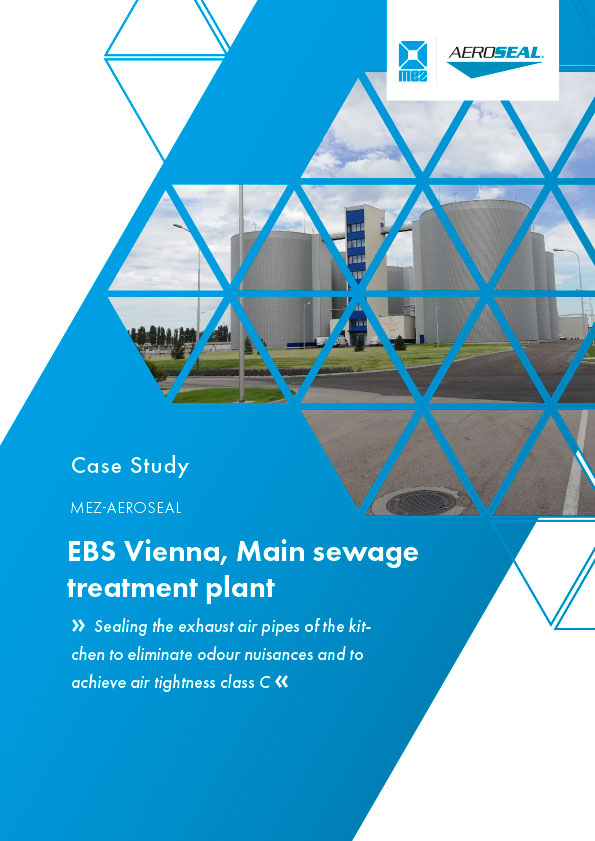Main sewage treatment plant
At one of the topographically lowest points of Vienna, on the Simmeringer Haide near the mouth of the Danube Canal into the Danube, the main sewage treatment plant of the City of Vienna purifies all municipal wastewater of Vienna. Up to 500,000 m³ per day (in dry weather) are purified in about 20 hours with the help of mechanical and two biological purification stages, then clarified and then discharged into the Danube Canal and further into the Danube.
PROJECT
Building: Main sewage treatment plant
City: Vienna, Austria
Date: 2020
AEROSEAL Partner: Aeroseal Austria GmbH
Preseal leakage: 57,6 l/s at 200Pa
Postseal leakage: 2,5 l/s at 200Pa
Reduction of leakage: 90,5%
PROJECT COURSE
Since unpleasant odors were caused by leaks in the kitchen of the main sewage treatment plant in Vienna‘s office wing, they had to be eliminated as quickly as possible. A first inspection showed that there were leaks in both the ventilation unit and the exhaust air chamber. After these had been sealed manually and the odour sample had been reduced, it was found that in addition to the exhaust air duct, the overpressure area of the ventilation unit also showed leaks. In order to eliminate these leaks as well, a sheet metal plate was installed at the pressure connection of the exhaust air fan in the ventilation unit. This was to ensure that the leaking housing of the ventilation unit including the silencer and exhaust air flap could be sealed together with the exhaust air duct. Prior to the sealing process, another sheet metal plate had to be inserted between the exhaust air duct and the concrete collector. The ventilation line, which was closed off at the front and rear in this way, was then connected to the sealing device via a foil hose and an initial leakage measurement was carried out with this device. This showed leakages of almost 60 l/s. However, the Aeroseal process was able to reduce these leaks by 95.7 % to only 2.5 l/s within a short period of time, thus achieving air tightness class C for both the ventilation unit and the air duct and eliminating the odor problems.


